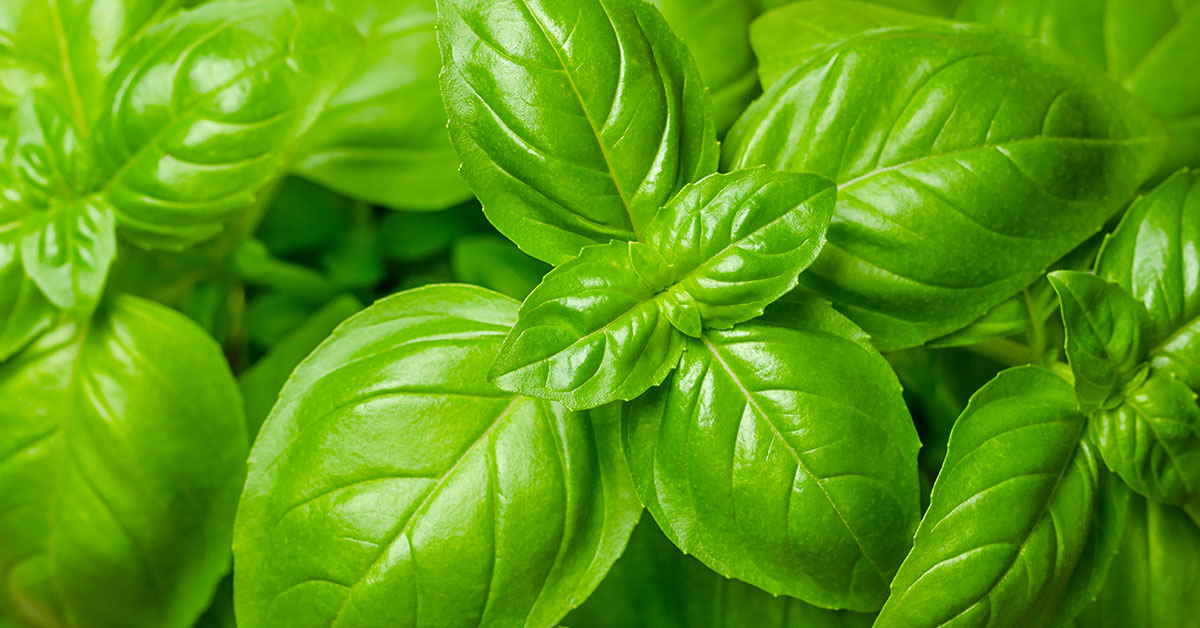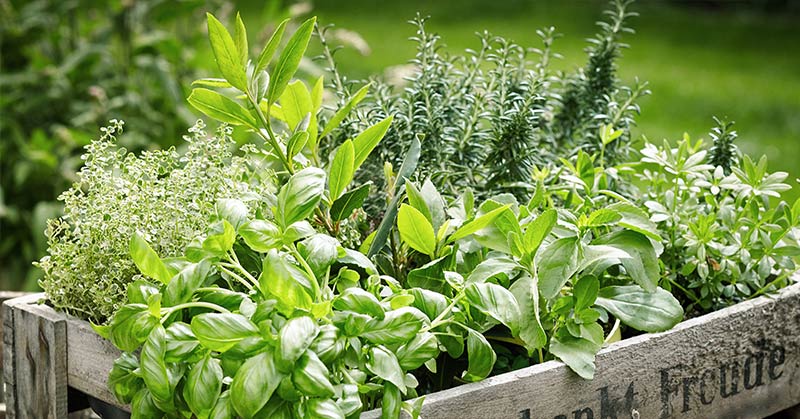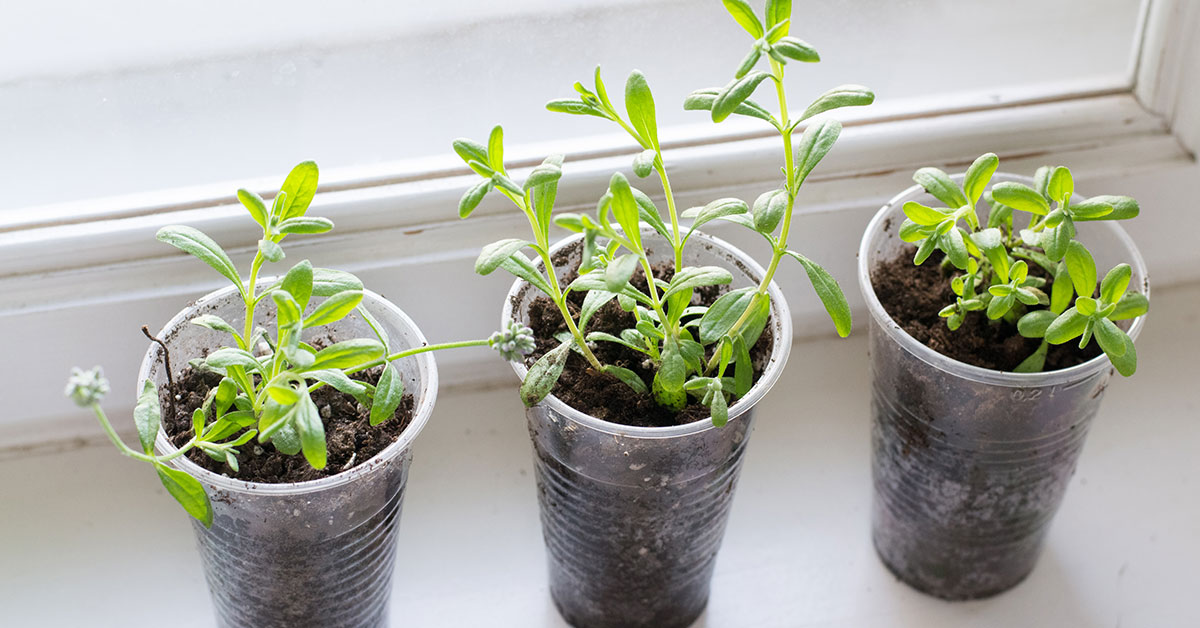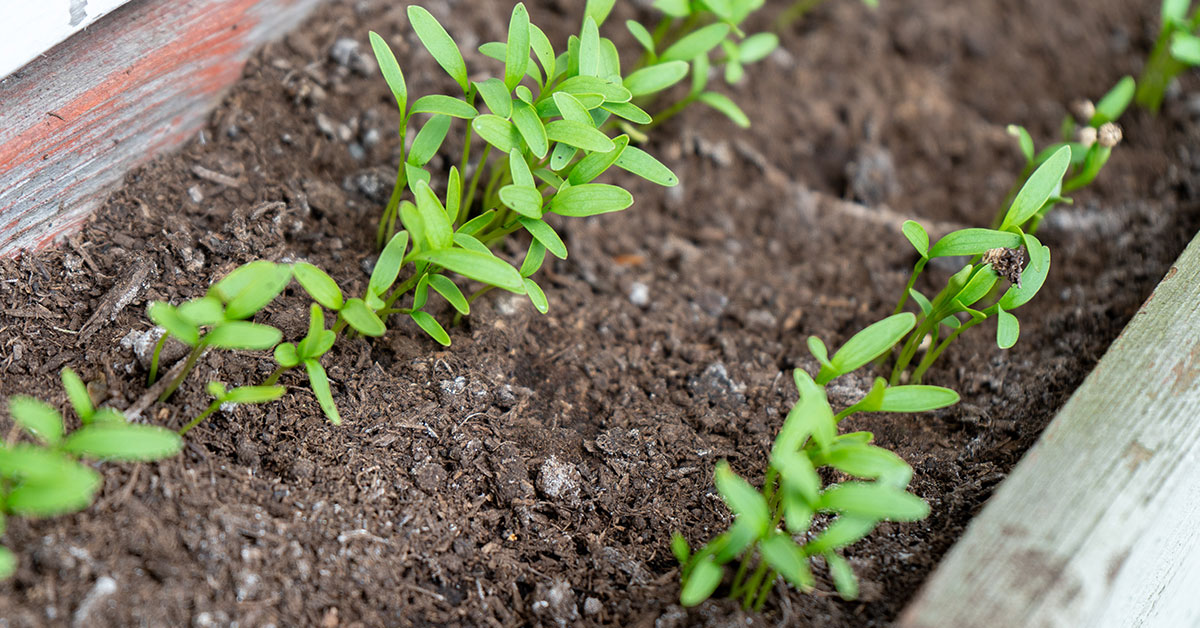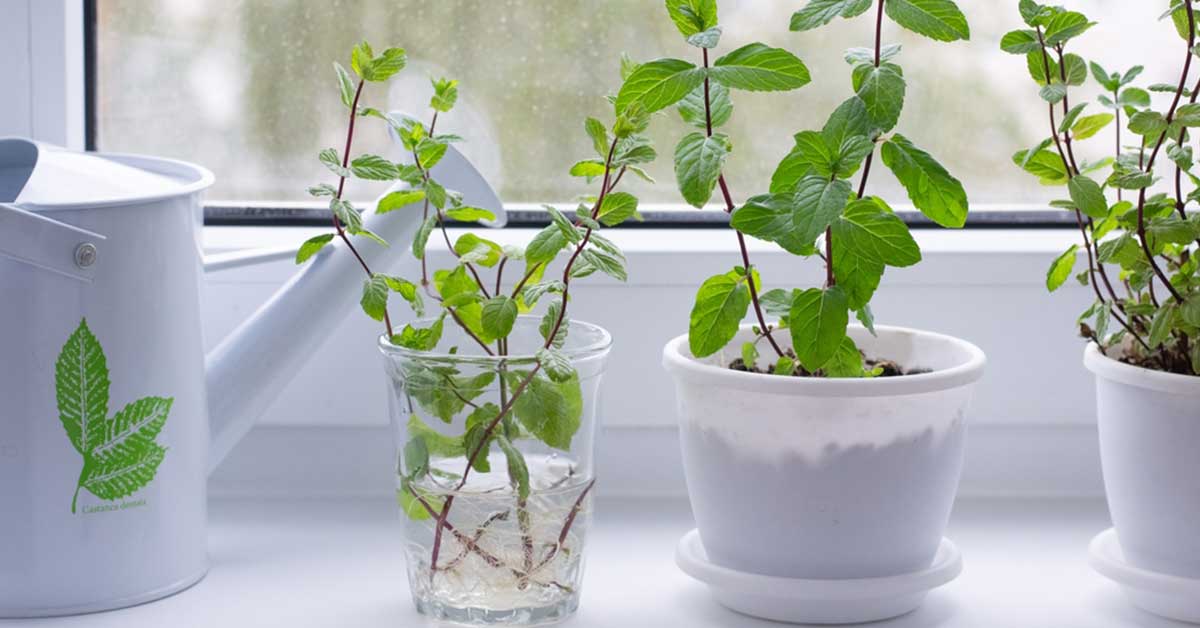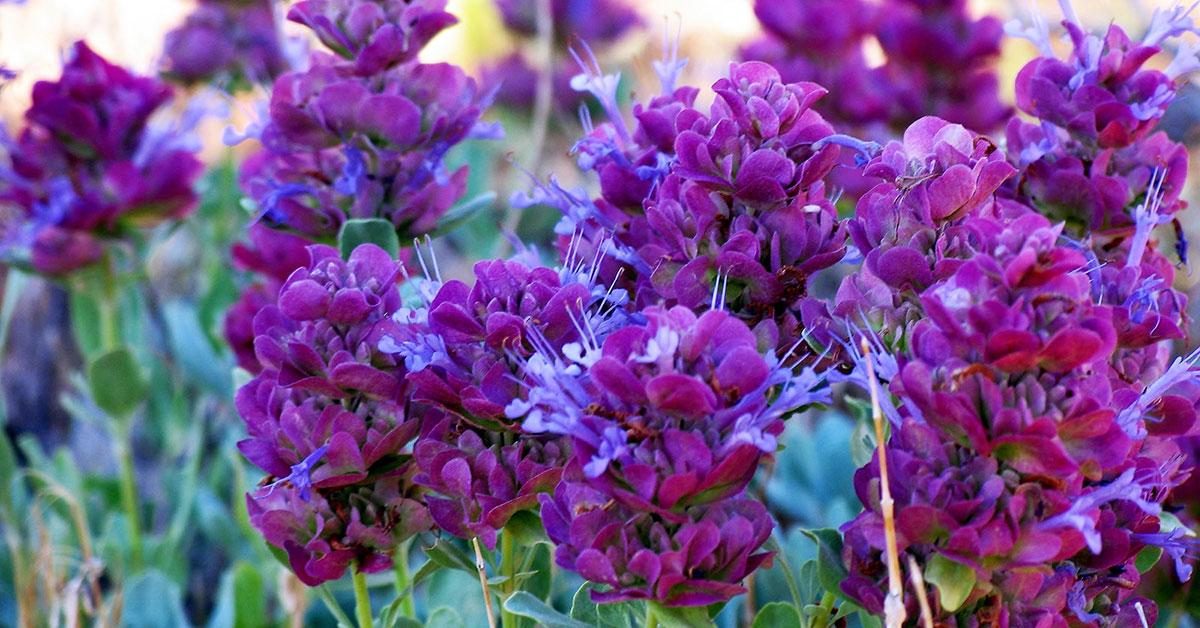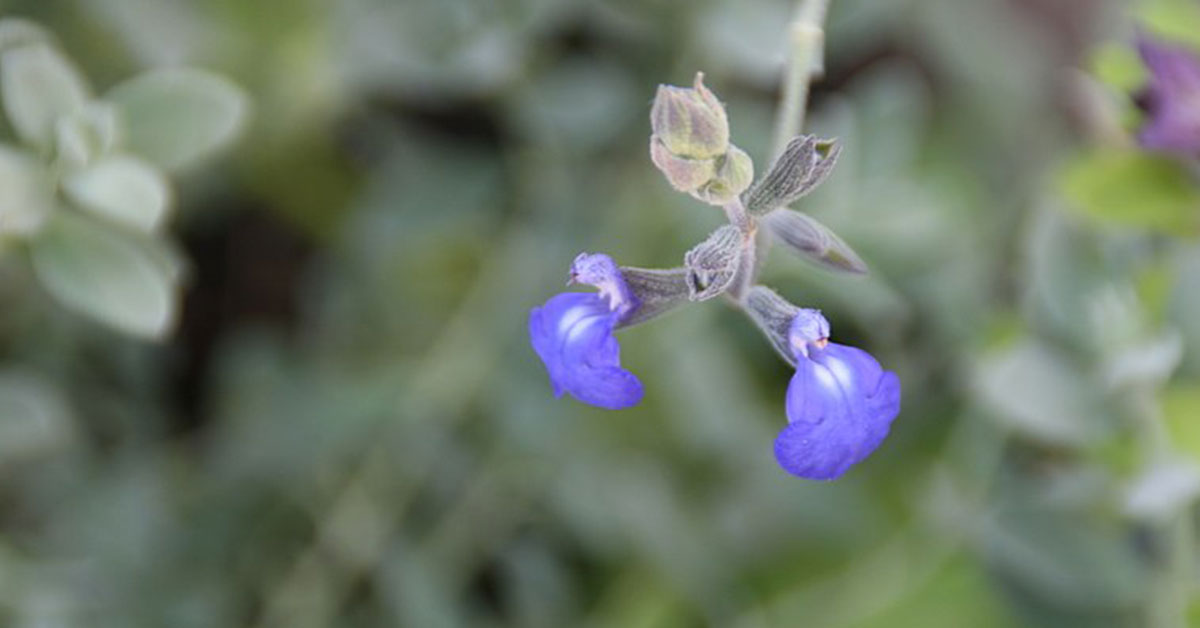Genovese Basil is a popular herb that has been grown and used in Italy for centuries. It is known for its strong aroma and flavor, making it a staple ingredient in many Italian dishes such as pesto, caprese salad and tomato sauce. This variety of basil has a rich history and is now grown and enjoyed all over the world. In this blog post, we will explore the origins, characteristics, and uses of this herb, as well as tips on how to grow and care for this delicious herb.
What is a Genovese Basil?
Genovese Basil, also known as sweet basil or Ocimum basilicum, is a type of basil that is commonly used in Italian cuisine. It is a cultivar of the basil plant that is native to India and other tropical regions of Asia, but has become popular all over the world due to its unique aroma and flavor.
The leaves of this herb are bright green, smooth, and glossy with a slightly pointed shape. The plant itself can grow up to 2 feet tall and produces small white or pink flowers. The scent of Genovese Basil is sweet and pungent, with notes of clove, anise, and mint. Its flavor is slightly sweet and spicy, with a hint of pepper and a mild bitterness.
Genovese Basil is commonly used in Italian dishes such as pesto, caprese salad, and tomato sauce. It is also used in Thai and Vietnamese cuisine, and is a popular ingredient in many other types of dishes. The essential oil of this herb is used in aromatherapy and herbal medicine for its calming and stress-relieving properties.
Overall, Genovese Basil is a versatile and delicious herb that can add flavor and aroma to a wide variety of dishes. Whether you’re cooking up a classic Italian dish or experimenting with new recipes, this herb is sure to add a touch of flavor and freshness to your cooking.
What makes Genovese Basil different from other varieties?
Genovese Basil (Ocimum basilicum ‘Genovese’) is a basil variety that is highly regarded for its exceptional flavor and aroma. Here are a few characteristics that differentiate Genovese Basil from other basil varieties:
Flavor: Genovese Basil is renowned for its strong and distinct flavor profile. It offers a rich, sweet, and slightly spicy taste that is often described as the quintessential basil flavor. The flavor is intense and robust, making it a popular choice for culinary applications.
Aroma: The aroma of Genovese Basil is highly aromatic and captivating. It has a strong and fragrant scent that is characteristic of classic basil varieties. The aroma is both herbaceous and slightly floral, enhancing the overall sensory experience.
Leaf Appearance: Genovese Basil has medium to large-sized leaves that are bright green and smooth. The leaves are relatively broad and slightly elongated with a rounded shape. They have a velvety texture and a glossy sheen, adding visual appeal to the plant.
Culinary Uses: Genovese Basil is widely used in Italian cuisine and is particularly favored in dishes like pesto sauce, caprese salad, pasta sauces, and pizzas. Its robust flavor and aroma make it a fantastic choice for adding depth and freshness to various savory recipes.
Growth Habit: Genovese Basil typically grows as a bushy plant with an upright growth habit. It can reach a height of around 18 to 24 inches (45 to 60 cm) and has a dense foliage structure. This compact growth habit makes it suitable for container gardening and herb gardens.
Genovese Basil is considered one of the premier basil varieties for its exceptional flavor and its importance in Italian culinary traditions.
How to grow Genovese Basil
Genovese Basil is a culinary herb that is known for its strong, sweet flavor and aroma. It is widely used in Italian cuisine and is a must-have ingredient in many dishes like pesto, tomato sauce, and salads. If you love cooking with fresh herbs, you may want to consider growing this herb in your garden or in a pot indoors. Here are some tips on how to grow Genovese Basil:
- Choose the right location: Genovese Basil thrives in warm, sunny locations with well-draining soil. Choose a spot in your garden or balcony that receives at least 6 hours of sunlight each day.
- Plant the seeds or seedlings: You can start from seeds or purchase seedlings from a local nursery. If you are starting from seeds, sow them in a pot or directly in the soil after the last frost. Cover the seeds with a thin layer of soil and keep them moist until they germinate. If you are using seedlings, transplant them into the soil or a larger pot.
- Water regularly: This herb needs to be watered regularly, especially during hot and dry weather. Water the plant deeply once a week or when the top inch of soil feels dry. Avoid overwatering as it can lead to root rot.
- Fertilize occasionally: Genovese Basil benefits from regular fertilization with a balanced fertilizer. Apply the fertilizer once a month during the growing season.
- Prune regularly: Pruning this herb helps to promote bushy growth and prevent it from becoming leggy. Pinch off the top two sets of leaves when the plant reaches a height of 6 inches. Continue to pinch off the top of the stems every few weeks to encourage more growth.
With these tips, you can easily grow Genovese Basil and enjoy its delicious flavor in your cooking. Remember to harvest the leaves regularly to keep the plant healthy and productive.
Other growing tips
Here are some other tips for growing Genovese Basil:
- Soil: Genovese Basil thrives in well-drained soil. Make sure that the soil is not too wet or too dry, as this can cause the plant to wilt or die.
- Sunlight: Basil needs ample sunlight to grow and thrive. Make sure that the plant gets at least six hours of direct sunlight each day.
- Watering: Basil needs to be watered regularly, but be careful not to over-water it. The soil should be moist, but not waterlogged.
- Fertilizer: Adding a balanced fertilizer to the soil can help the plant grow strong and healthy. Use a fertilizer that is high in nitrogen, as this will promote leaf growth.
- Pruning: Pruning the basil plant regularly will encourage bushier growth and prevent it from getting too tall and spindly. Pinch off the top two sets of leaves every few weeks to encourage new growth.
By following these tips, you can grow a healthy and productive Genovese Basil plant that will provide you with fresh herbs for cooking all season long.
Common problems
Genovese Basil is one of the most popular herbs used in cooking. It has a strong flavor and aroma that can add depth and complexity to any dish. However, growing Genovese Basil can be challenging, especially for beginners. In this section, we will discuss some common problems that people encounter when growing Genovese Basil.
- Poor Soil Quality: Genovese Basil requires well-draining soil that is rich in nutrients. If the soil is too heavy, it can become waterlogged and lead to root rot. On the other hand, if the soil is too light, it won’t hold enough moisture and nutrients. To ensure healthy growth, it’s essential to amend the soil with organic matter and ensure that it drains well.
- Overwatering: Overwatering is one of the most common mistakes that people make when growing Genovese Basil. Basil prefers moist but not water-logged soil. Overwatering can lead to root rot, which can cause the plant to wilt and eventually die. To prevent overwatering, make sure to water the plant when the soil is dry to the touch.
- Underwatering: On the other hand, underwatering can also be a problem. Basil requires consistent moisture in the soil to thrive. If the soil becomes too dry, the leaves will start to wilt and turn brown. To prevent underwatering, make sure to water the plant regularly, especially during hot and dry weather.
- Pests and Diseases: It is susceptible to several pests and diseases, including aphids, whiteflies, and fungal diseases. To prevent infestations, it’s essential to keep the plant healthy by providing it with proper soil, water, and light conditions. You can also use natural pest control methods, such as neem oil or insecticidal soap, to keep pests at bay.
- Lack of Sunlight: This herb requires at least six hours of direct sunlight per day to grow properly. If the plant doesn’t receive enough sunlight, it will become leggy and weak, which can make it more susceptible to pests and diseases. To ensure healthy growth, make sure to place the plant in a sunny location or use grow lights if growing indoors.
Hrowing Genovese Basil can be a rewarding experience, but it requires proper care and attention. By addressing these common problems, you can ensure that your plant thrives and produces delicious, aromatic leaves that you can use in your cooking.
Uses
Genovese basil is a popular type of basil that is widely used in various cuisines. It is an essential herb in Italian cuisine and is commonly used in pasta dishes, pizzas, salads, and sauces. Here are some of the most common uses of this herb:
- Pesto sauce: Genovese basil is the primary ingredient in pesto sauce, which is a famous Italian sauce. The sauce is made by blending together fresh basil leaves, pine nuts, garlic, and Parmesan cheese. It is served with pasta, sandwiches, or used as a dip.
- Soups and stews: This herb adds a sweet and fragrant flavor to soups and stews, making them more appetizing. It can be used in tomato soup, vegetable soup, minestrone, and many other soups.
- Salads: It can be used as a fresh ingredient in salads. It adds a refreshing flavor to salads, making them more delicious.
- Meat and fish dishes: Genovese basil can be used to enhance the flavor of meat and fish dishes. It can be used as a seasoning for roasted chicken, grilled fish, or grilled vegetables.
- Drinks: Genovese basil can be used to flavor drinks such as lemonade, tea, and cocktails. It adds a unique and refreshing taste to the drinks.
Genovese basil is a versatile herb that can be used in various dishes and drinks. It is a must-have ingredient in Italian cuisine and is an excellent addition to any kitchen.
